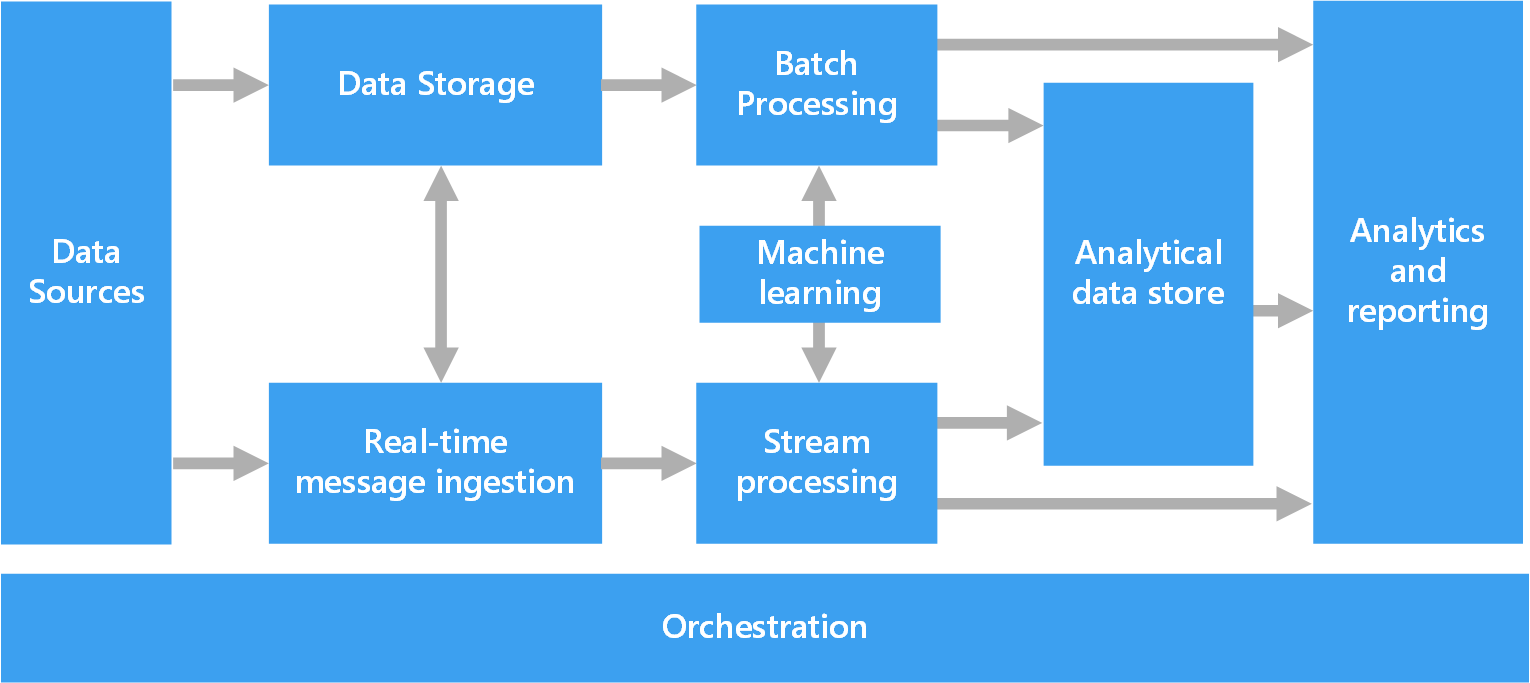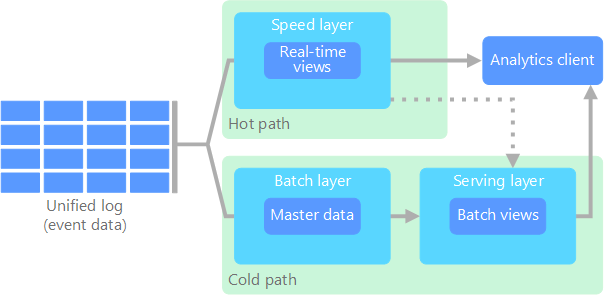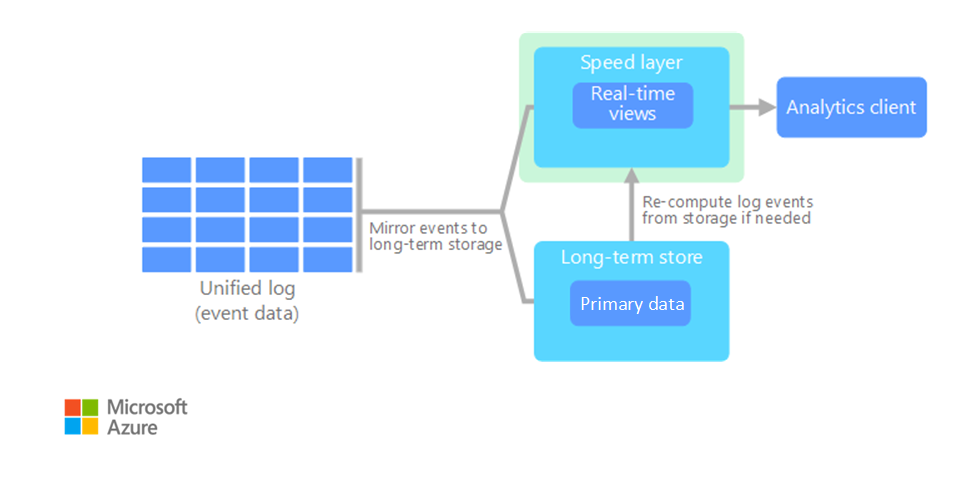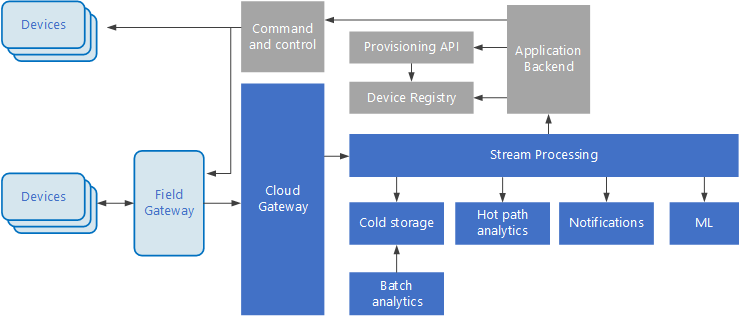
A big data architecture is designed to handle the ingestion, processing, and analysis of data that is too large or complex for traditional database systems. The threshold at which organizations enter into the big data realm differs, depending on the capabilities of the users and their tools. For some, it can mean hundreds of gigabytes of data, while for others it means hundreds of terabytes. As tools for working with big datasets advance, so does the meaning of big data. More and more, this term relates to the value you can extract from your data sets through advanced analytics, rather than strictly the size of the data, although in these cases they tend to be quite large.
Over the years, the data landscape has changed. What you can do, or are expected to do, with data has changed. The cost of storage has fallen dramatically, while the means by which data is collected keeps growing. Some data arrives at a rapid pace, constantly demanding to be collected and observed. Other data arrives more slowly, but in very large chunks, often in the form of decades of historical data. You might be facing an advanced analytics problem, or one that requires machine learning. These are challenges that big data architectures seek to solve.
Big data solutions typically involve one or more of the following types of workload:
Consider big data architectures when you need to:
The following diagram shows the logical components that fit into a big data architecture. Individual solutions may not contain every item in this diagram.

Most big data architectures include some or all of the following components:
When working with very large data sets, it can take a long time to run the sort of queries that clients need. These queries can't be performed in real time, and often require algorithms such as MapReduce that operate in parallel across the entire data set. The results are then stored separately from the raw data and used for querying.
One drawback to this approach is that it introduces latency — if processing takes a few hours, a query may return results that are several hours old. Ideally, you would like to get some results in real time (perhaps with some loss of accuracy), and combine these results with the results from the batch analytics.
The lambda architecture, first proposed by Nathan Marz, addresses this problem by creating two paths for data flow. All data coming into the system goes through these two paths:
The batch layer feeds into a serving layer that indexes the batch view for efficient querying. The speed layer updates the serving layer with incremental updates based on the most recent data.

Data that flows into the hot path is constrained by latency requirements imposed by the speed layer, so that it can be processed as quickly as possible. Often, this requires a tradeoff of some level of accuracy in favor of data that is ready as quickly as possible. For example, consider an IoT scenario where a large number of temperature sensors are sending telemetry data. The speed layer may be used to process a sliding time window of the incoming data.
Data flowing into the cold path, on the other hand, is not subject to the same low latency requirements. This allows for high accuracy computation across large data sets, which can be very time intensive.
Eventually, the hot and cold paths converge at the analytics client application. If the client needs to display timely, yet potentially less accurate data in real time, it will acquire its result from the hot path. Otherwise, it will select results from the cold path to display less timely but more accurate data. In other words, the hot path has data for a relatively small window of time, after which the results can be updated with more accurate data from the cold path.
The raw data stored at the batch layer is immutable. Incoming data is always appended to the existing data, and the previous data is never overwritten. Any changes to the value of a particular datum are stored as a new timestamped event record. This allows for recomputation at any point in time across the history of the data collected. The ability to recompute the batch view from the original raw data is important, because it allows for new views to be created as the system evolves.
A drawback to the lambda architecture is its complexity. Processing logic appears in two different places — the cold and hot paths — using different frameworks. This leads to duplicate computation logic and the complexity of managing the architecture for both paths.
The kappa architecture was proposed by Jay Kreps as an alternative to the lambda architecture. It has the same basic goals as the lambda architecture, but with an important distinction: All data flows through a single path, using a stream processing system.

There are some similarities to the lambda architecture's batch layer, in that the event data is immutable and all of it is collected, instead of a subset. The data is ingested as a stream of events into a distributed and fault tolerant unified log. These events are ordered, and the current state of an event is changed only by a new event being appended. Similar to a lambda architecture's speed layer, all event processing is performed on the input stream and persisted as a real-time view.
If you need to recompute the entire data set (equivalent to what the batch layer does in lambda), you simply replay the stream, typically using parallelism to complete the computation in a timely fashion.
From a practical viewpoint, Internet of Things (IoT) represents any device that is connected to the Internet. This includes your PC, mobile phone, smart watch, smart thermostat, smart refrigerator, connected automobile, heart monitoring implants, and anything else that connects to the Internet and sends or receives data. The number of connected devices grows every day, as does the amount of data collected from them. Often this data is being collected in highly constrained, sometimes high-latency environments. In other cases, data is sent from low-latency environments by thousands or millions of devices, requiring the ability to rapidly ingest the data and process accordingly. Therefore, proper planning is required to handle these constraints and unique requirements.
Event-driven architectures are central to IoT solutions. The following diagram shows a possible logical architecture for IoT. The diagram emphasizes the event-streaming components of the architecture.

The cloud gateway ingests device events at the cloud boundary, using a reliable, low latency messaging system.
Devices might send events directly to the cloud gateway, or through a field gateway. A field gateway is a specialized device or software, usually collocated with the devices, that receives events and forwards them to the cloud gateway. The field gateway might also preprocess the raw device events, performing functions such as filtering, aggregation, or protocol transformation.
After ingestion, events go through one or more stream processors that can route the data (for example, to storage) or perform analytics and other processing.
The following are some common types of processing. (This list is certainly not exhaustive.)
The boxes that are shaded gray show components of an IoT system that are not directly related to event streaming, but are included here for completeness.
This article is maintained by Microsoft. It was originally written by the following contributors.
See the following relevant Azure services: